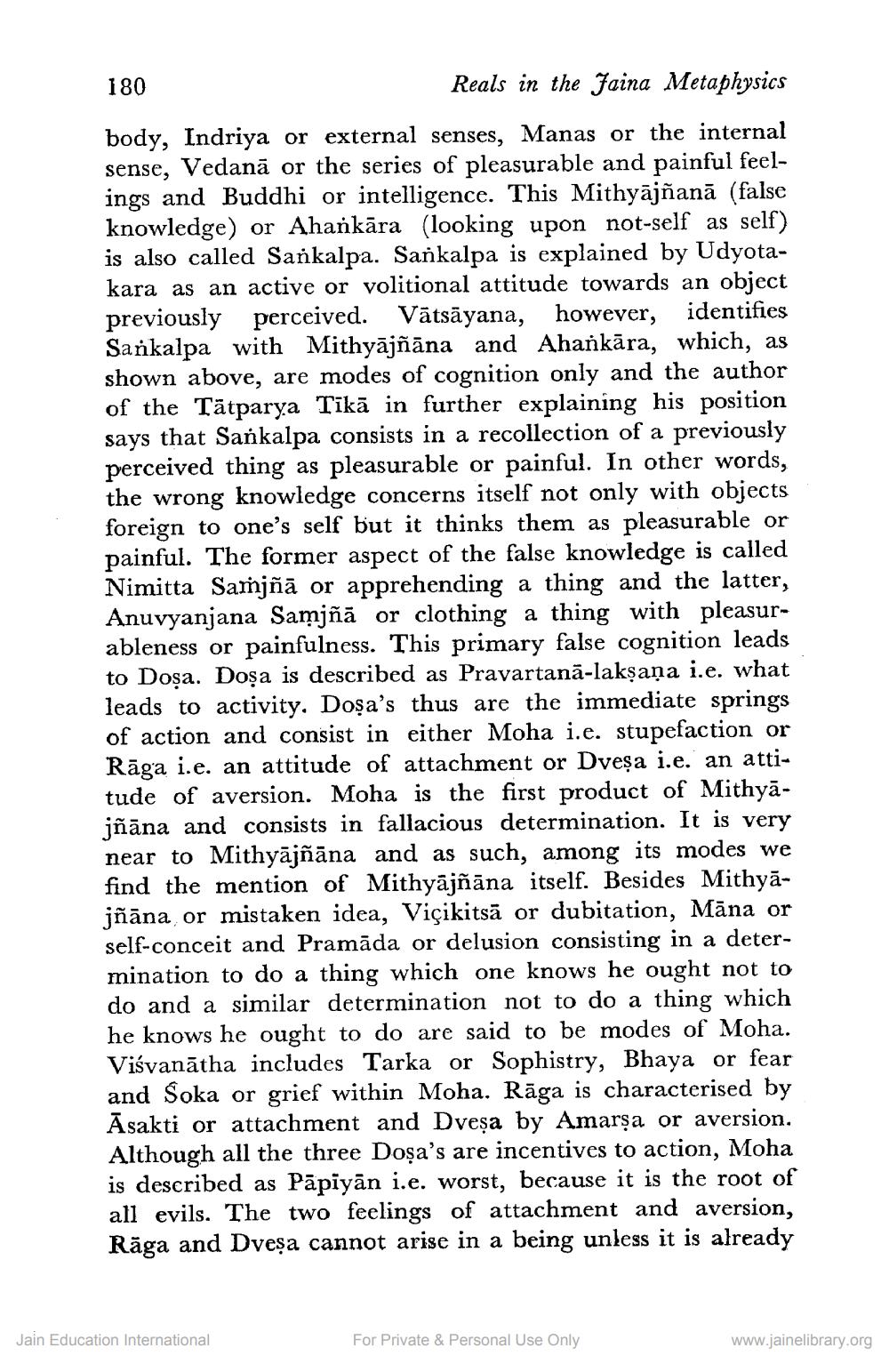________________
180
Reals in the faina Metaphysics body, Indriya or external senses, Manas or the internal sense, Vedanā or the series of pleasurable and painful feelings and Buddhi or intelligence. This Mithyājñanā (false knowledge) or Ahankāra (looking upon not-self as self) is also called Sankalpa. Sankalpa is explained by Udyotakara as an active or volitional attitude towards an object previously perceived. Vātsāyana, however, identifies Sankalpa with Mithyājñāna and Ahankāra, which, as shown above, are modes of cognition only and the author of the Tātparya Tīkā in further explaining his position says that Sankalpa consists in a recollection of a previously perceived thing as pleasurable or painful. In other words, the wrong knowledge concerns itself not only with objects foreign to one's self but it thinks them as pleasurable or painful. The former aspect of the false knowledge is called Nimitta Samjñā or apprehending a thing and the latter, Anuvyanjana Samjñā or clothing a thing with pleasurableness or painfulness. This primary false cognition leads to Doșa. Doşa is described as Pravartană-laksaņa i.e. what leads to activity. Doşa's thus are the immediate springs of action and consist in either Moha i.e. stupefaction or Rāga i.e. an attitude of attachment or Dveșa i.e. an attitude of aversion. Moha is the first product of Mithyājñāna and consists in fallacious determination. It is very near to Mithyājñāna and as such, among its modes we find the mention of Mithyājñāna itself. Besides Mithyājñāna or mistaken idea, Viçikitsā or dubitation, Māna or self-conceit and Pramāda or delusion consisting in a determination to do a thing which one knows he ought not to do and a similar determination not to do a thing which he knows he ought to do are said to be modes of Moha. Viśvanātha includes Tarka or Sophistry, Bhaya or fear and Soka or grief within Moha. Rāga is characterised by Asakti or attachment and Dveșa by Amarșa or aversion. Although all the three Doşa's are incentives to action, Moha is described as Pāpīyān i.e. worst, because it is the root of all evils. The two feelings of attachment and aversion, Rāga and Dveșa cannot arise in a being unless it is already
Jain Education International
For Private & Personal Use Only
www.jainelibrary.org




